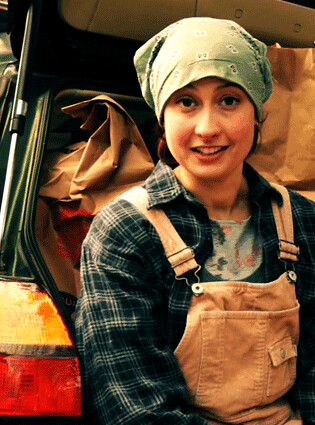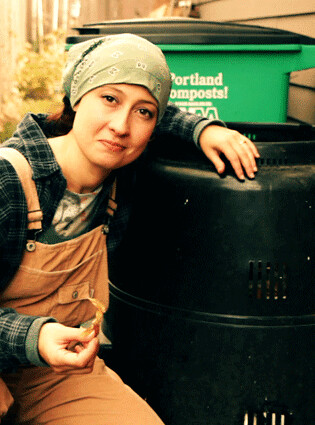Don’t just let your leaves fall. Give them a new life!

By Erica Timm
One of my favorite things about autumn is the explosion of fall color along our city streets that seems to make every walk a natural artistic adventure. While the leaf color change is surely a benefit of trees, the leaves eventually fall off the trees and can sometimes seem more of a burden than a benefit. In hopes of inspiring myself (and others) to embrace the falling leaves, and transition discarded leaves into a productive new path, I’ve compiled this list of ways to give your fallen leaves a new life.
Mulch with leaves
Leaves can be used as an alternative to commercial mulches. Leaves tend to break down quicker than courser mulch material, which means your soil gleans the nutrients more quickly, creating a richer soil.
If you are mulching your entire yard, the leaves can simply be left where they fall and mowed over to discourage matting and enable the leaves to break down more quickly. Another option is to rake the leaves into a pile and then spread them over the areas to be mulched. If the leaves are large, a shovel can be used to chop them up into smaller pieces before spreading.
Leaves can also be used as one of the layers during sheet mulching. While there are various sheet mulching techniques, the method typically includes the layering of biodegradable materials, such as leaves, atop a permeable weed barrier (e.g., cardboard, burlap, newspaper, etc.). So if you are planning to transition an area from grass into a garden bed, now is the time, while there is an abundance of at least one of the ingredients.
Create compost & nourish your soil
Leaves provide much-needed nutrients and plant material to your home compost bin. They can help jump-start your next batch of compost after the leaves have been harvested in the fall. If you shred the leaves before adding them to your compost, they’ll decompose more quickly.

Your composting will make dark, crumbly, nutrition-rich organic material. You can use the mulch to enhance the soil in your garden, enrich your lawn, and/or add it around the base of your trees and shrubs. Using mulch that’s several inches thick, with a three-inch clearance directly around the trunk, will help your trees grow, minimize weed growth, and reduce your watering costs.
Need some help getting started? Not to worry, there are plenty of resources in Portland to help you. Metro offers easy-to-follow tips on composting and sells a variety of compost bins at reasonable costs. Choose the composting method that suits you and your family – from worm bins to open-air or hot composting. Portland Parks & Recreation and Clackamas Community College even offer demonstration sites where you can learn about composting firsthand.
Share the gift of compost
Yard debris and food scraps placed in your green composting roll cart are transported to commercial composting facilities that quickly break down the materials into compost. The compost is then sold to landscape companies, residents and other local businesses. So, if you don’t have a need for compost or mulch, place the leaves in your green bin and roll it out to the curb to be quickly recycled for you.
Portland’s leaf districts

The city of Portland has established a number of leaf districts in well-canopied neighborhoods throughout Portland. Residents of Portland’s leaf districts are billed $15 to $30 because the city needs to spend extra time clearing the streets in these well-canopied neighborhoods. It’s a great deal if you have a lot of leaves and you don’t want to keep them on site; you just simply rake them into the street and the city collects them on your designated leaf day. Residents also have the option to opt-out if they plan to manage their own leaves, or do not have trees with leaves that fall into the street. Click here to see if you are lucky enough to be in a leaf district, or to learn more about opting out.
To learn more about turning your fall foliage into a resource, visit the Portland Leaf Harvest website. And, I’d love to hear from you. How do you give your leaves new life?
–Timm is a Neighborhood Trees Senior Specialist for Friends of Trees.
